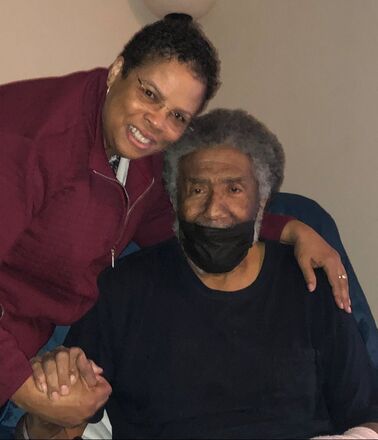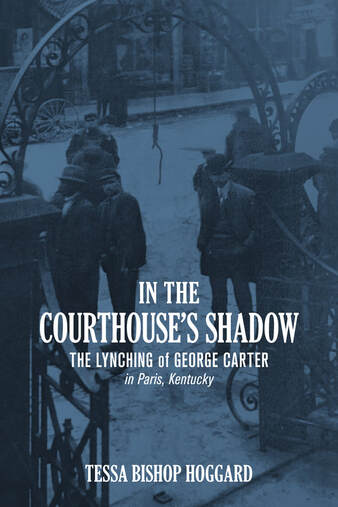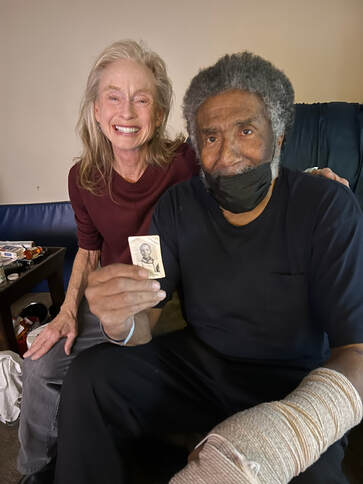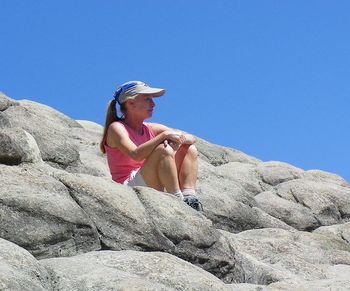 Tessa Bishop Hoggard with Jim Bannister, the great-nephew of a lynching victim, George Carter. Tessa Bishop Hoggard with Jim Bannister, the great-nephew of a lynching victim, George Carter. She spent years researching his family. She wrote and published a book examining the tragic story of his great-uncle. She arranged for him to meet a descendant of the woman who brought enormous grief upon his family. But she had never met him in person…until this week. Tessa Bishop Hoggard is on a mission. She recently traveled from her current home in Texas to her hometown of Paris, Ky., to round up support for her latest project: erecting a historical marker near the Paris courthouse where two Black men were lynched, in 1866 and 1901. The proposed marker will also honor a third man who was lynched nearby in 1889. Tessa’s purpose is clear: She wants to ensure that the citizens of her hometown—the old and the young—have the opportunity to confront the truths of its past. She is certain that only through acknowledging our dark history can we heal as a community and as a nation. So far her trip has been a success. After sending numerous emails and letters to local citizens and officials over the last year, she is finding that a brief face-to-face encounter seems to seal the deal. “I came prepared to recite the history of each of the three lynchings, to introduce these officials to the specific story of each individual,” Tessa told me. “But that hasn’t been necessary. As soon as they learn what I am proposing, they are offering support. I am truly flabbergasted. And elated.”  One of those victims of mob violence was Jim Bannister’s great-uncle, George Carter, who was hung on the iron gate in front of the courthouse in 1901. Carter was the older brother of Jim’s grandmother Katie—the woman who raised him. Two photos of Carter’s body hanging from the noose still exist and are reprinted in Tessa’s superb book In the Courthouse’s Shadow: The Lynching of George Carter in Paris, Kentucky. Those photos, and the newspaper description of the original incident that eventually led to mob violence, raise suspicions about whether Carter was even involved in the alleged “assault” of a local banker’s wife, Mary Lake Barnes Board, my great-grandmother. Initial reporting described the incident as an attack by “a negro man, who attempted to grab her pocket-book.” [The Kentuckian-Citizen, Paris, Ky., December 5, 1900] Many of you already know the story of how Tessa arranged from afar for me to have a public conversation with Jim Bannister in 2020. That conversation offered him an opportunity to express his grief and his frustration at not being able to uncover the truth of his great-uncle’s story, as well as his relief that it was finally being aired in public. It offered me a chance to publicly voice my regret for the horror his family endured and my apology for the role my family played in what took place. This week Tessa, Jim, and I gathered together for the first time. Emotions ran high. We took turns expressing how profoundly grateful we are for all that has transpired in the last two years. We hugged. I shed a few tears. Jim and I talk fairly often (we have to dissect Kentucky basketball on a regular basis), and I have seen him a handful of times, despite the challenges of the pandemic. But he and Tessa were in the same room for the first time. It was breathtaking to witness. In early 2023, Tessa will submit her application to the Historical Marker Program of the Kentucky Historical Society. It appears her trip this week has accomplished her goals: she has met with local officials, she has solicited letters of support, and she has revisited the scene of these tragic extrajudicial hangings. She also met George Carter’s great-nephew for the first time.  Sallie Showalter, the great-granddaughter of the woman allegedly assaulted by George Carter, with his great-nephew, Jim Bannister. Jim is holding his school photo from 1947-48, which Tessa found in her late mother’s belongings. Tessa’s interest in George Carter’s story was ignited when her mother shared a newspaper clipping she had kept from 1978 retelling the story of the hanging.
1 Comment
joseph G anthony
12/1/2022 10:05:25 am
I admire the courage and sheer grit it's taken to bring this part of our painful past to our attention. Speak its name aloud. Bravo to Tessa and Jim Clark.
Reply
Your comment will be posted after it is approved.
Leave a Reply. |
Details
Archives
June 2023
Categories
All
|


 RSS Feed
RSS Feed